The chairs from the palace by master Gambs in the novel by I. Ilf and E. Petrov "12 Chairs" were upholstered with furniture tapestry. What else is tapestry known for? The name brings to mind a picture or a carpet on the wall with an incredibly beautiful pattern. It turns out that the fabric also has the same name. Where is it used?
What is this?
There can be two answers to the question of what a tapestry is. It is a decorative carpet or a woven picture that decorates the interior. Also, a tapestry is such a special fabric that it is impossible to confuse it with others due to the special type of weaving of threads. And it is used not only for making wall paintings. The scope of its use is much wider.
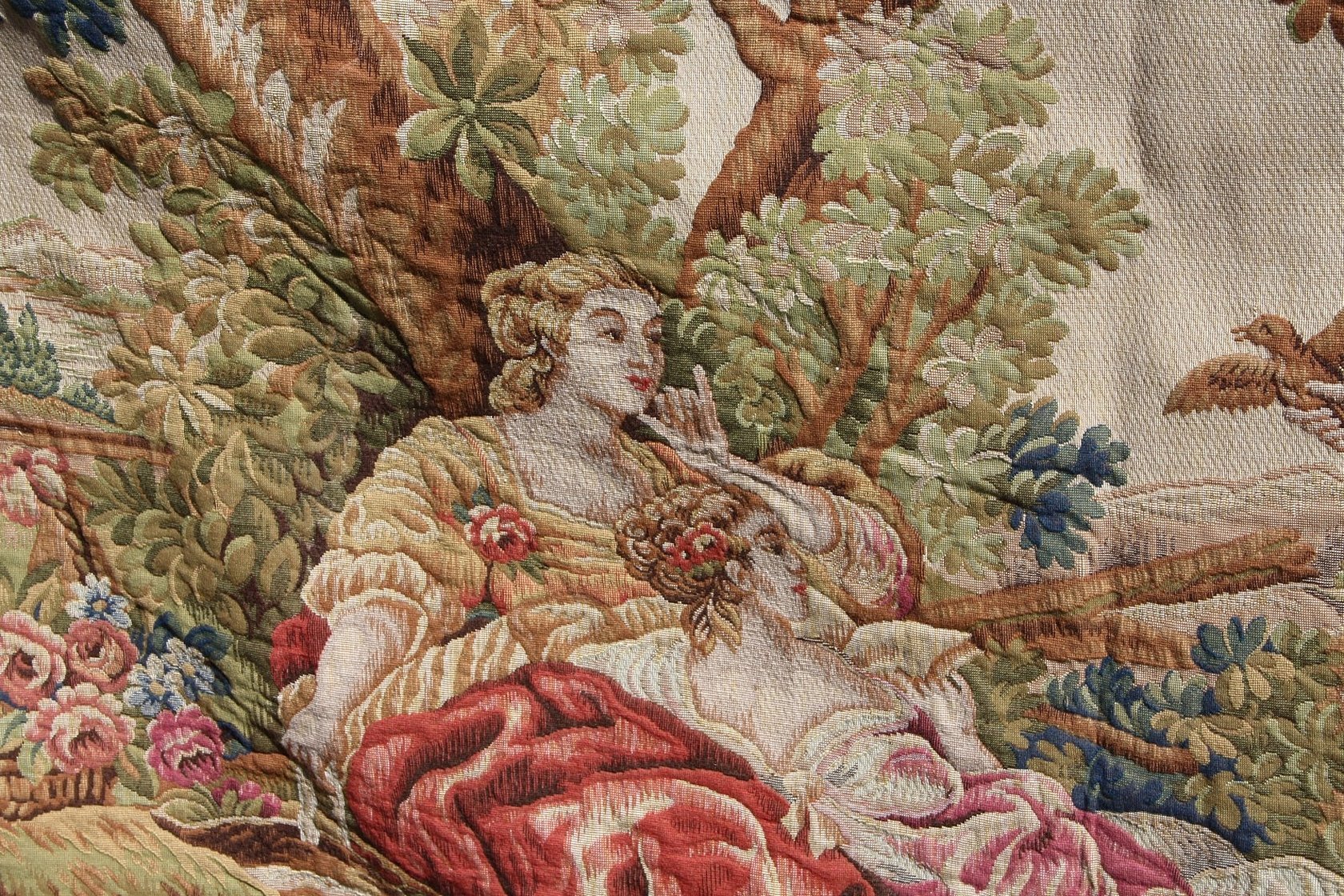
For your information! Egyptian pharaohs wore clothes made of this fabric. Ancient Greeks and Romans decorated their houses with tapestries depicting the exploits of gods and heroes. Burial shrouds in Peru were made of tapestry. Japan and China did not remain on the sidelines, where tapestries were created from silk threads. And for items intended for emperors, gold and silver threads were used.
Tapestry making is a laborious and painstaking process, requiring incredible patience from the weaver. It took a whole year to create a 1.5x1.5 m carpet. Therefore, the products were unique, made to order and incredibly expensive.
Tapestry (fabric) came to Europe thanks to the Crusades. The exotic patterns appealed to Europeans, and in the 17th century, the French, Gobelin, established production of decorative material. Previously, carpets - woven paintings were called tapestries, but later they were given the familiar definition - tapestries.
At the beginning of the 19th century, the Frenchman J. Jacquard invented a machine for producing complex patterned fabrics. Since then, the cost of the tapestry material has decreased, and it has become somewhat thinner. But it has also become more widely used.
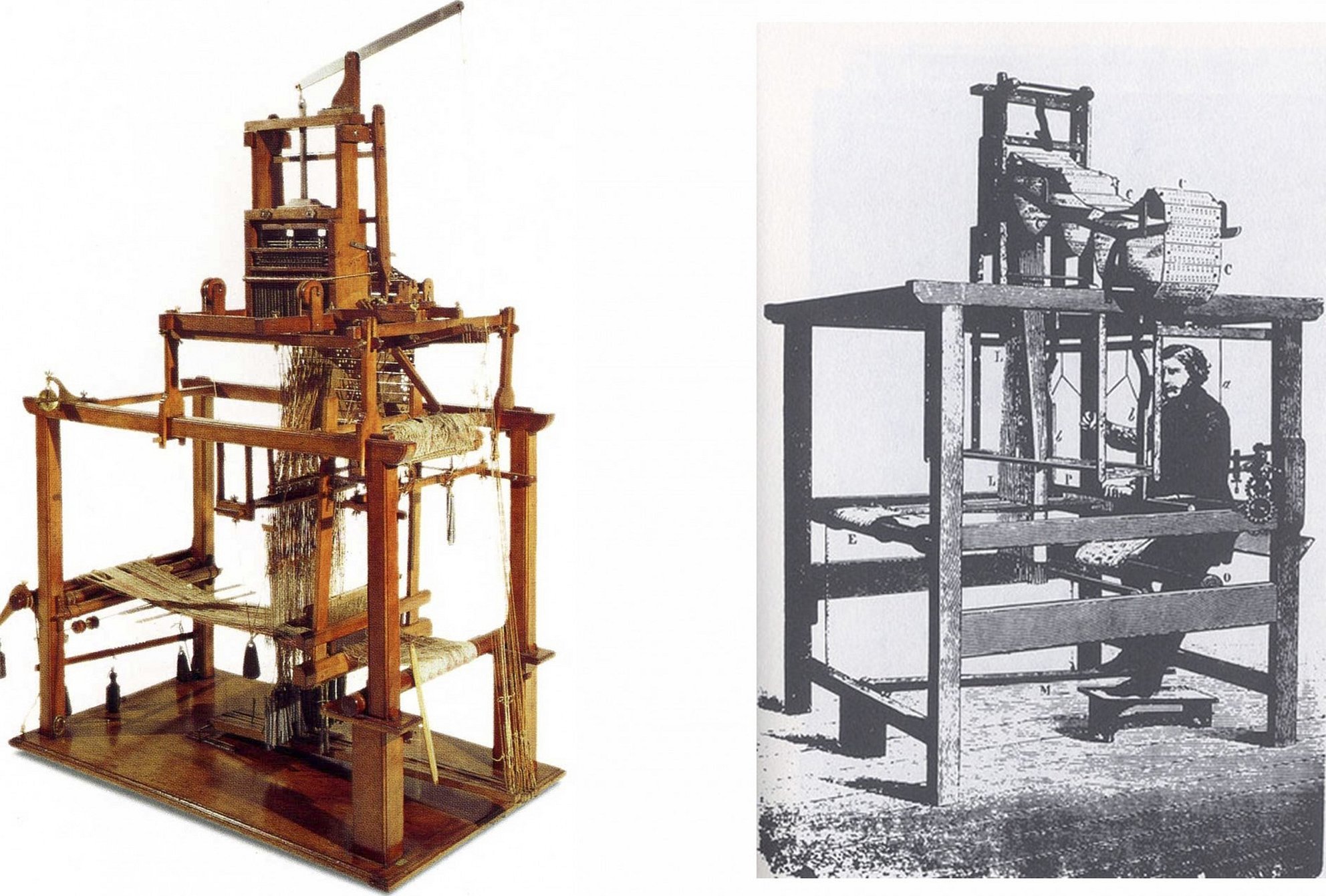
In Russia, the first tapestry factory appeared during the era of innovations of Emperor Peter I. It was he who brought the best craftsmen from France and founded a tapestry manufactory, where for a long time only French weavers worked.
Modern production techniques:
- the warp threads are pulled onto the frame (they can be of any color, since they will not be visible in the final product), and the weft threads form both the fabric and the pattern;
- cross-weaving of threads on machines;
- Machine production in keeping with the traditions of hand weaving.
The result is a complex relief pattern, called jacquard after the creator of the machine. A large number of threads form a dense and durable woven tapestry. If it is necessary to obtain a double-sided product, two warps are taken. The weft threads are connected to each other, moving along a given pattern.
Important! The rules of the Russian language state that the correct spelling of the word for a hand-woven carpet is "gobelin", while "gobilen" or "gabelen" are unacceptable forms. The word comes from the French surname Gobelin.
Composition of the tapestry
The composition of the fabric is selected so that the base is durable. Flax, cotton, wool are suitable. And the weft threads should be soft and elastic. This is necessary to create a unique pattern. Therefore, silk, viscose, acrylic, polyester are used. At the same time, the threads can be different in thickness, this gives greater texture to the fabric. In total, about 10 threads are used for weaving.
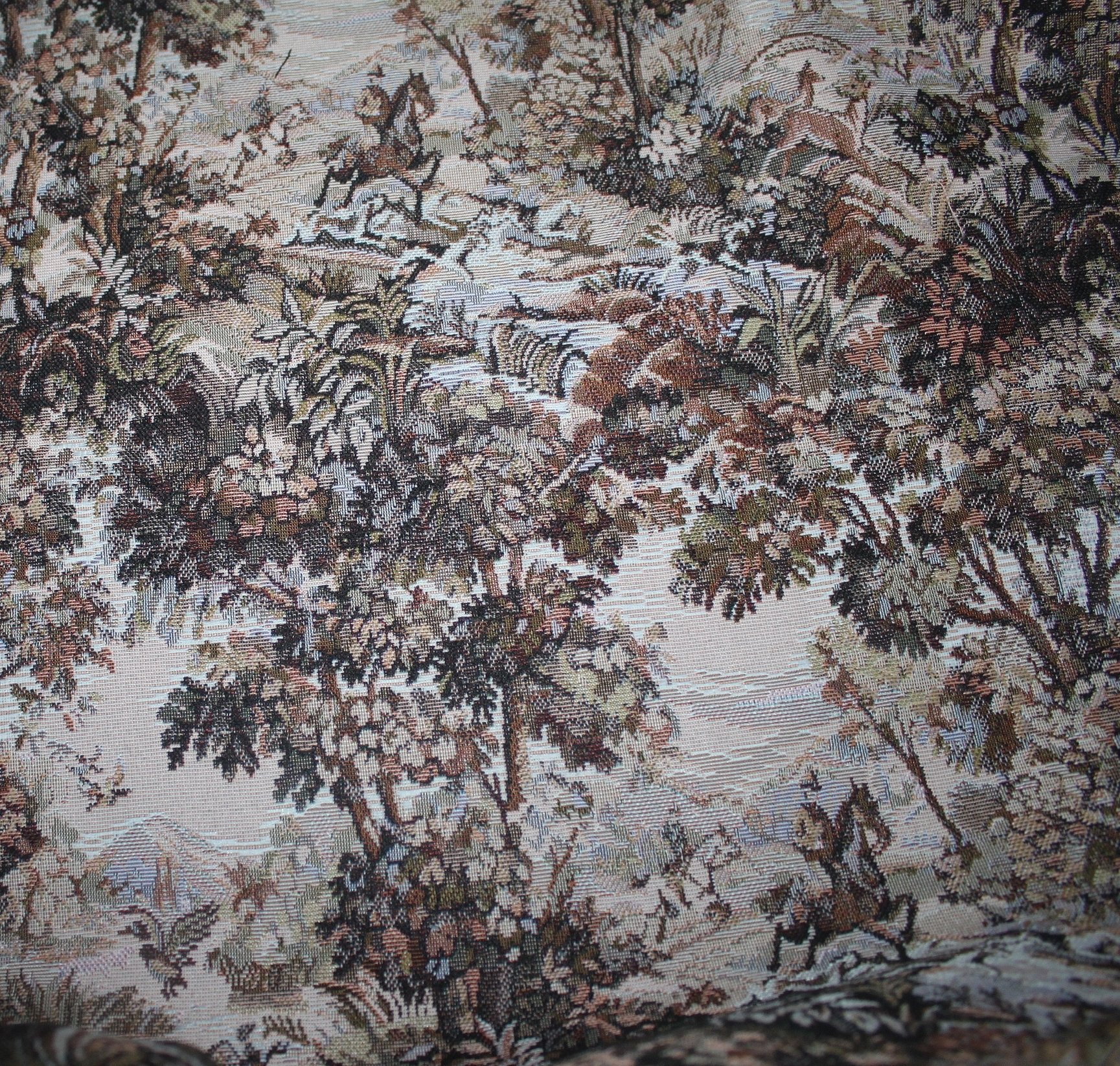
Material characteristics
The complex structure and large number of threads give the material the following characteristics:
- the fabric has a three-layer structure, so it is much heavier than other types;
- due to the complex weaving and large number of threads it has a high density (up to 350 g/m²);
- resistance to wrinkling due to high density;
- color fastness due to high-quality dyeing of synthetic fabric;
- not subject to deformation.
Types of fabric
Fabrics are distinguished by several characteristics.
By structure:
- single layer;
- two-layer;
- three-layer.
By density:
- light;
- moderate;
- heavy.
Depending on the type of pattern applied, there are the following types of tapestry:
- with a large pattern;
- with small intricate ornamentation;
- with patterns imitating embroidery;
- melange (mixed color);
- plain tapestry.
By the number of bases used:
- unilateral;
- double-sided.
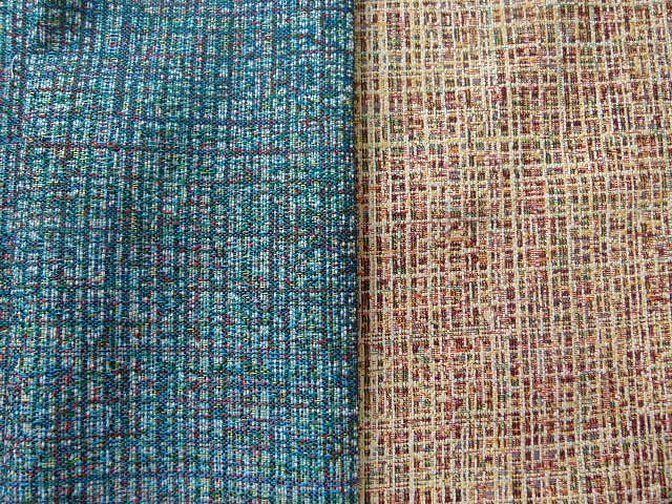
Scope of application
A wide range of types of tapestry fabrics allows it to be used for various purposes.
Tapestry for furniture upholstery - of course, primarily chairs, but also sofas, armchairs, poufs.
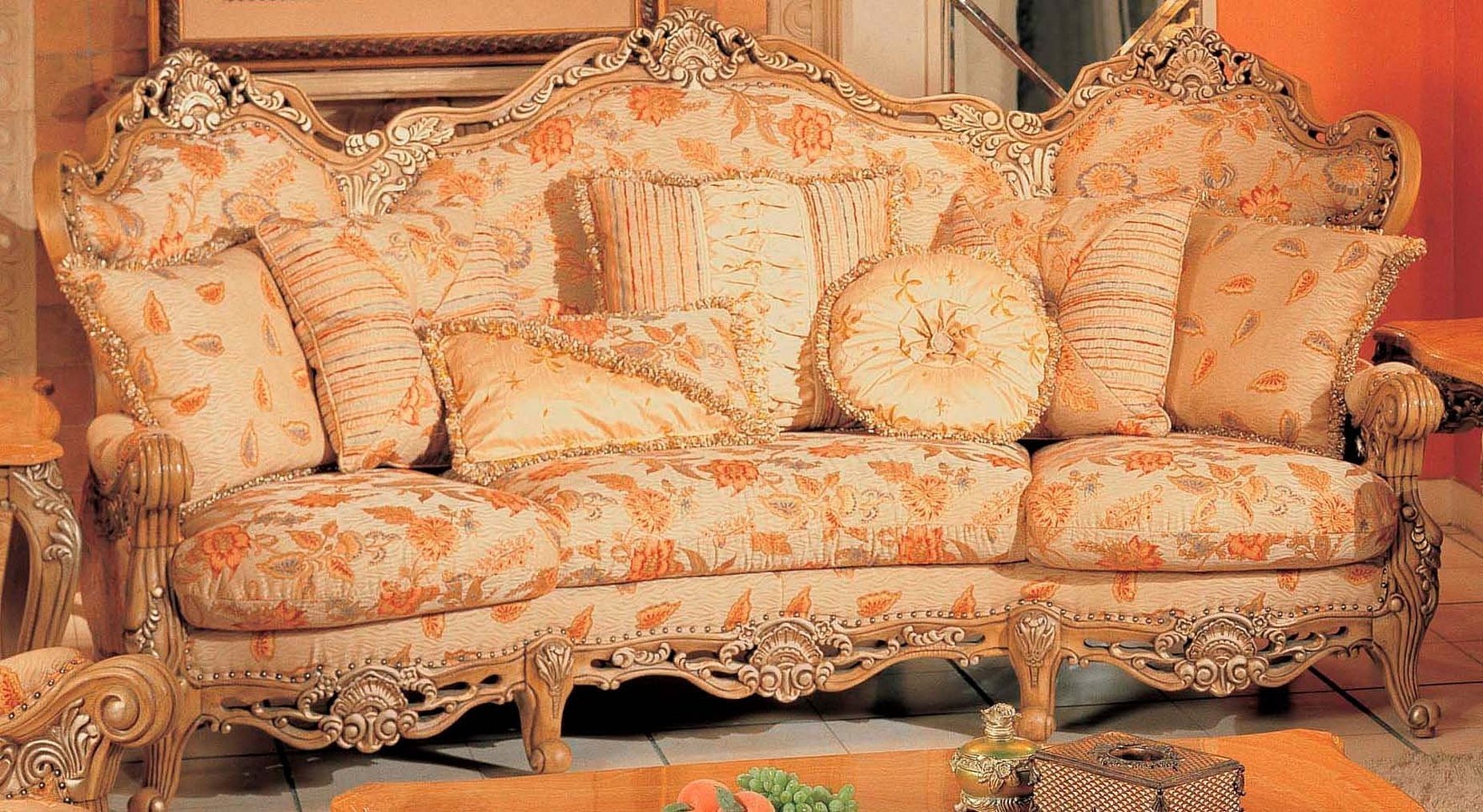
Decorative pillows and pillowcases.
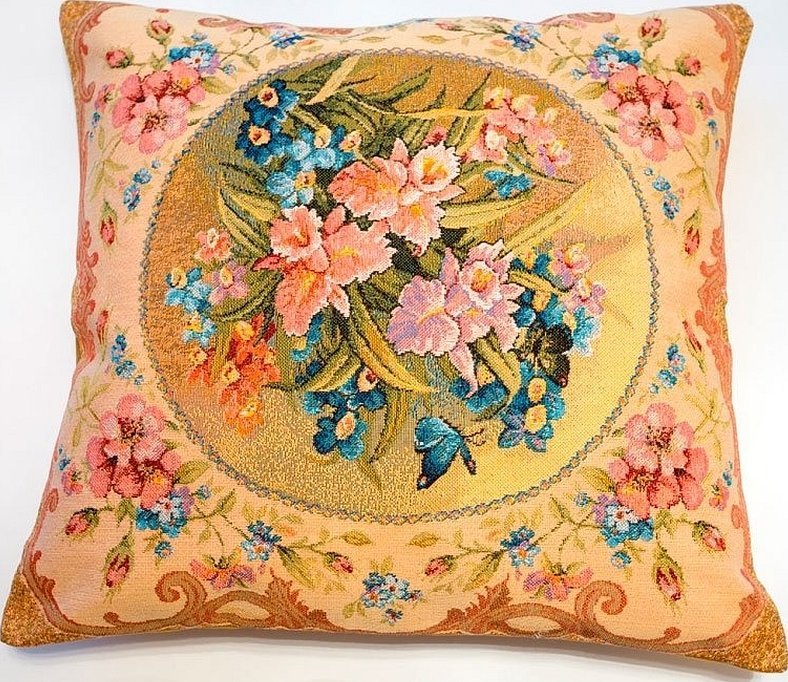
Bedspreads.
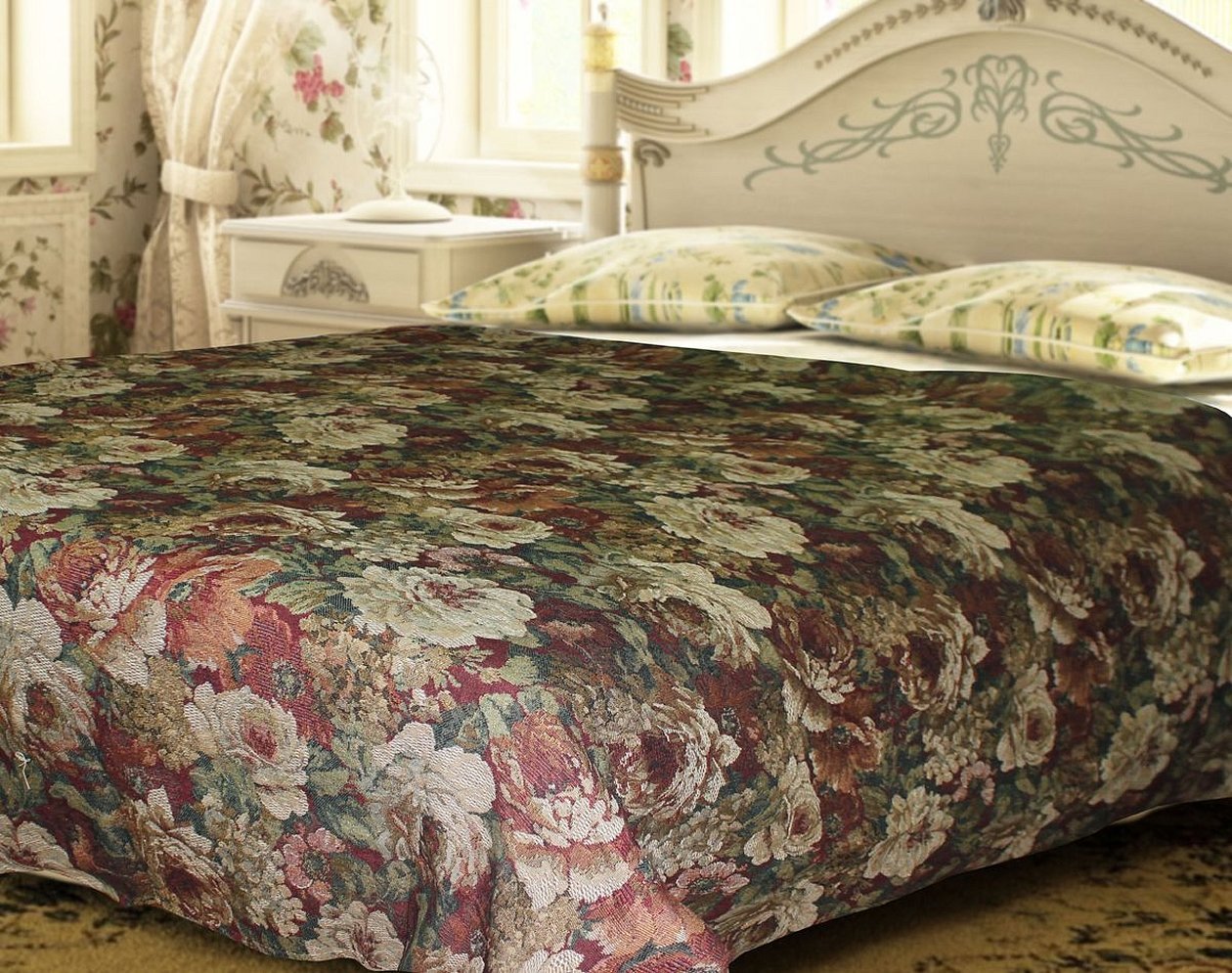
Curtains and drapes.

Amazingly beautiful wall panels.

Fashion accessories - handbags, belts, cosmetic bags.

Clothes - coats and jackets.
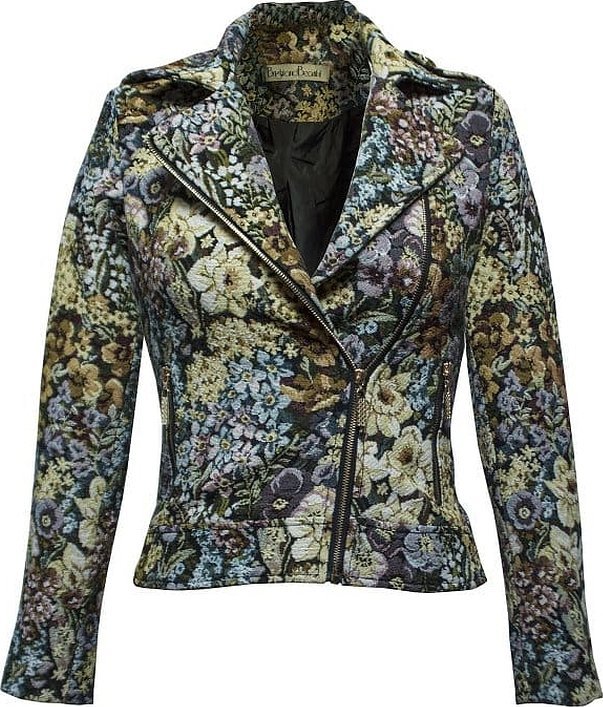
Wall upholstery to create a themed interior.
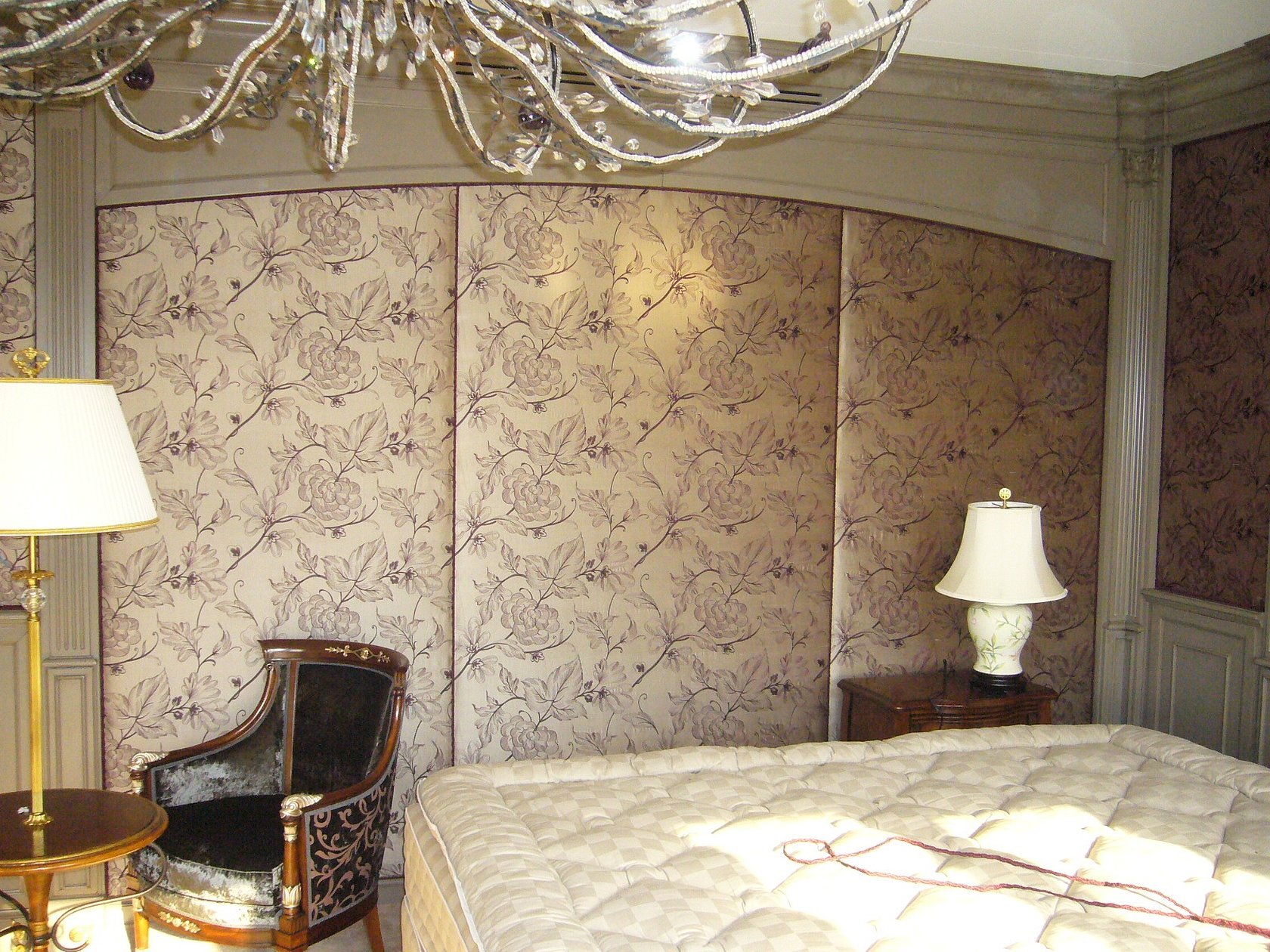
To create a special atmosphere in a room, there are several well-known tapestry themes:
- oriental - warm and soft colors, images of people, animals or small ornaments;
- country - for lovers of folk style, clay products, woven rugs;
- Scandinavian - light pastel colors, naturalness and conciseness;
- Provence - seascapes, flowers, houses by the sea, lots of sun.
Please note! You can embroider a tapestry picture with your own hands. The technique is simple, similar to the cross-stitching method. Embroidery of pictures is done with a stitch, which is called tapestry. The front part of the stitch resembles an incomplete cross, and the back part is diagonal. There are ready-made kits on sale, which contain everything you need for embroidery.
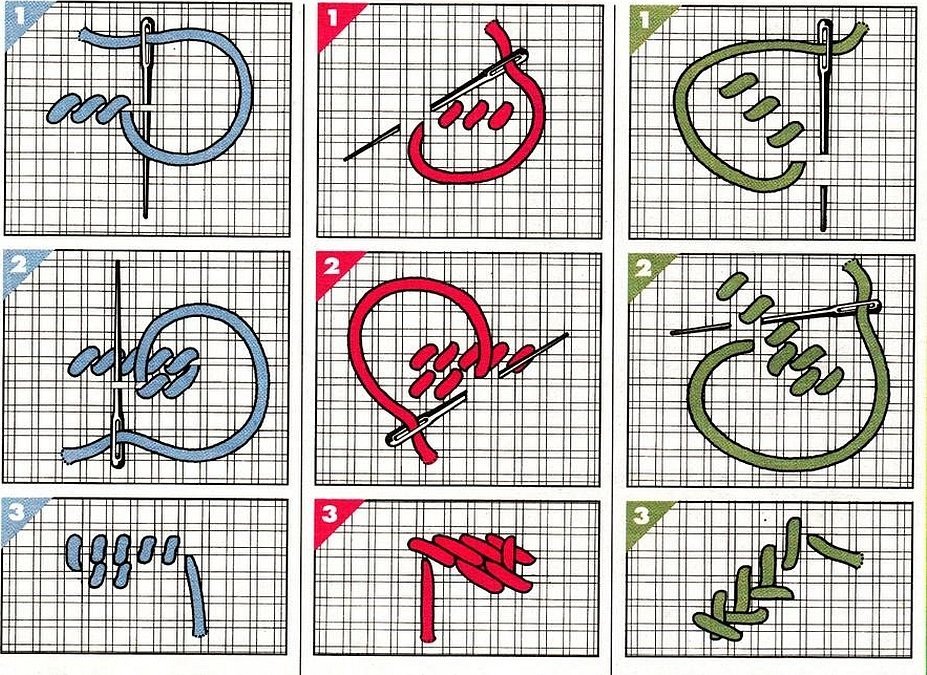
How to tell if it's a tapestry
Tapestry fabric differs from ordinary fabric (cotton, for example) in thickness and weight due to its multi-layered nature. In addition, the fabric's calling card is a special interweaving of threads that cannot be confused with another.
What does care consist of?
Tapestry is not the most capricious fabric, but it still requires special care. In care, you need to follow the manufacturer's recommendations, placed on the label, the product tag.
The most important thing to remember when using products made from this fabric is to prevent the tapestry from getting wet and to avoid constant exposure to sunlight.
For your information! Dust quickly accumulates on the rough surface of the fabric, in the ribs. If it is not removed regularly, the product will acquire a gray tint and lose its elegant appearance.
Care of tapestry fabric:
- You can get rid of dust using a household vacuum cleaner or a soft clothes brush;
- the dirt can be wiped with a soft sponge, moistened with water with a minimum addition of detergent. Then dry in a well-ventilated place;
- It is not recommended to iron the items, in the most critical case - from the inside out, heat the iron to no more than 150 °C;
- Do not machine wash. Hand wash only;
- Woven paintings should not be placed in places exposed to direct sunlight.
Pros and cons
The advantages of the fabric are as follows:
- wide range of applications;
- easy to care for;
- wear resistance and strength;
- a variety of textures, colors, and designs to suit even the most demanding taste;
- special treatment of products makes the material resistant to contamination;
- pleasant to the touch.
The disadvantages include the following characteristics:
- stiffness and heaviness of the fabric;
- prohibition on washing and ironing items;
- high cost.
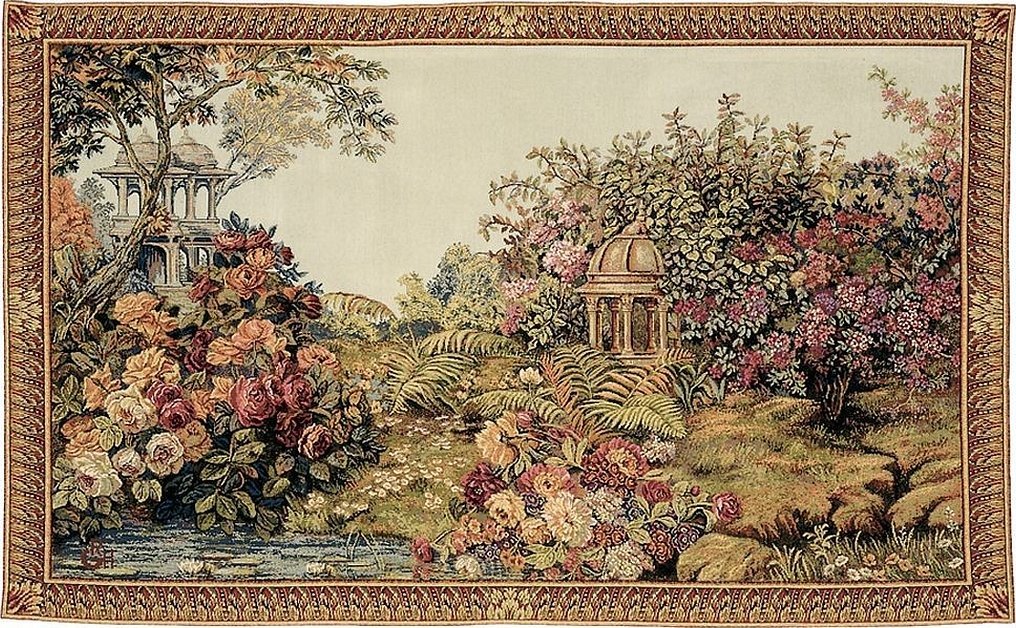
Reviews
Online reviews of the fabric are mostly positive:
Lyudmila, 29 years old, Samara
"I never thought about what kind of fabric tapestry is. I thought that these were paintings from a palace or a medieval castle. They are also called tapestry. But it turns out that such a material exists. I saw a charming ottoman and sofa cushions made of tapestry fabric in a furniture store. And I just fell in love with them! They really decorated the living room."
Varvara, 45 years old, Omsk
"I bought a tapestry fabric in a shop by the cut, it contains silk. The fabric is a delicate pastel colour - delicate pink with grey. The studio made me a dress. I have already worn it several times for special occasions. It looks very original. I took it to the dry cleaner, because you can't wash it! This is probably its only drawback. Everything else is fine."
If you want to turn your home into a palace, then you should use tapestry in the interior. It will be expensive, but it will look chic and royal. In addition, this type has many advantages, although the disadvantages should not be discounted.




